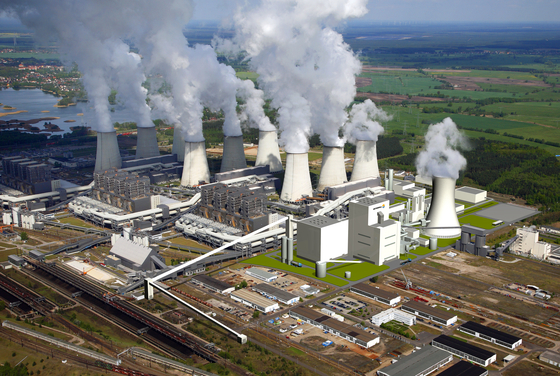
Germany’s shift to renewable energy has created a power market so volatile that humans are having trouble keeping up with it.
Four-year-old Grundgruen Energie GmbH, whose glass-walled office is just off Berlin’s most fashionable shopping street, uses a coping technique more likely found in markets for stocks, bonds and currencies: It lets a computer program do the hard stuff. About nine other trading firms are doing the same in the German market, most starting just last year, according to an estimate by the Epex Spot SE exchange in Paris.
The price movements in the nine-year-old intraday German power market are “about 200 times that of financial markets,” said Karl Frauendorfer, a professor of operations research at University of St. Gallen in Switzerland who has worked with electricity traders for almost 20 years. “The volatility makes it impossible for humans to efficiently comply with risk limits.”
German Chancellor Angela Merkel’s commitment to green energy has led to a three-fold increase in solar and wind power in the past decade as well as an exit from more predictable nuclear. The intermittent renewable output has made traders increasingly focus on hourly or 15 minutes electricity contracts to quickly react to changes in weather that alter the power supply. That’s increased the need for algorithmic computer programs that can do the buying and selling on their own.
“Trading is requiring ever more rapid decision-making,” Eberhard Holstein, the founder and chief executive officer of Grundgruen, said. “Automated trading is without question a competitive advantage, we can see that in our books.”
Here’s an example of how it works. On a cloudy Oct. 7, solar output was the lowest since March at 37.5 gigawatt-hours compared with an annual average of 93 gigawatt-hours. At Grundgruen’s office, minutes from Kurfuerstendamm, a red flash appeared every few seconds and jumped around on one of the company’s computer screens.
As power prices climbed and fell with the output of more than 1.5 million photovoltaic plants and wind mills in Germany, Gundgruen’s computer robot was busy buying and selling on Epex’s market for any of the day’s 24 hour-long segments or the 96 15- minute periods. The potential profit was there as prices fluctuated from 0 to 84 euros per megawatt-hour.
Algorithms Role
While algorithms — computer programs that detect slight price variations — trade 40 to 50 percent of European bonds and stocks, they’re used for less than 10 percent in European gas and power so far, according to Intalus GmbH, a financial software provider.
Many companies, including Statkraft AS, EnBW AG and Axpo AG, use the programs as support rather than letting them trade directly. Axpo employs them for only for 1 percent of trades in German power and carbon permits, James Isilay, an algorithmic trader at the Swiss utility, said.
Bigger utilities with gas or coal plants can balance intermittent solar and wind output, something that companies with solely renewables can’t. Instead they must forecast and trade their volatile output carefully, Ralf Burgdorf, Grundgruen’s head of trading and generation, said. The company sells renewable generation with a capacity equivalent to three nuclear reactors.
At Grundgruen and its peers, computers take over after traders sell the expected output from solar and wind farms based on the weather forecast from the day before. As production diverges from the prognosis, a computer algorithm makes sure that the amount of electricity sold matches what is produced, while also weighing prices and transaction cost.
Trader’s Role
During the day a Grundgruen trader can decide to override an order set by the computer. At night the robots are pretty much on their own, unless difficult weather conditions are forecast. Other companies rely even more on the machines. At Kom-Solution GmbH, a German energy trader owned by five municipal utilities, trading is left to the computers overnight and on weekends, saving costs.
Even though it’s still the minutes, not seconds, that count for computers trading on the power market, the work of traders is changing as Germany aims to double renewable generation to 60 percent within 20 years.
“In the 90s, it was the Gordon Gekko guy, settling things over the phone with exclusive information,” Andreas Keil, chief executive officer of Energy2Market GmbH, said. His company also uses computers to trade that are monitored around the clock by employees. “There was the classical trader with 12 screens in the 2000s and increasingly it’s a person with math skills dealing with algorithms.”
Recommended for you
